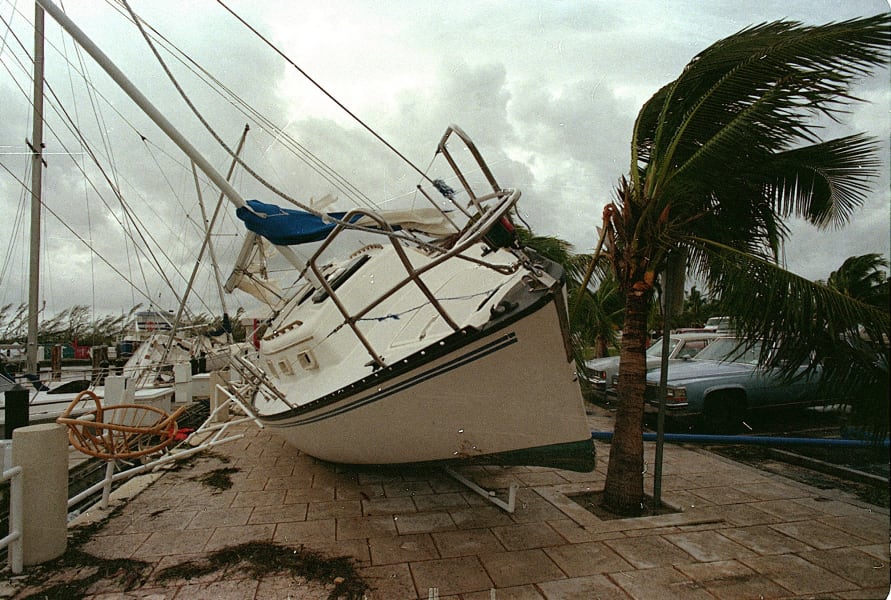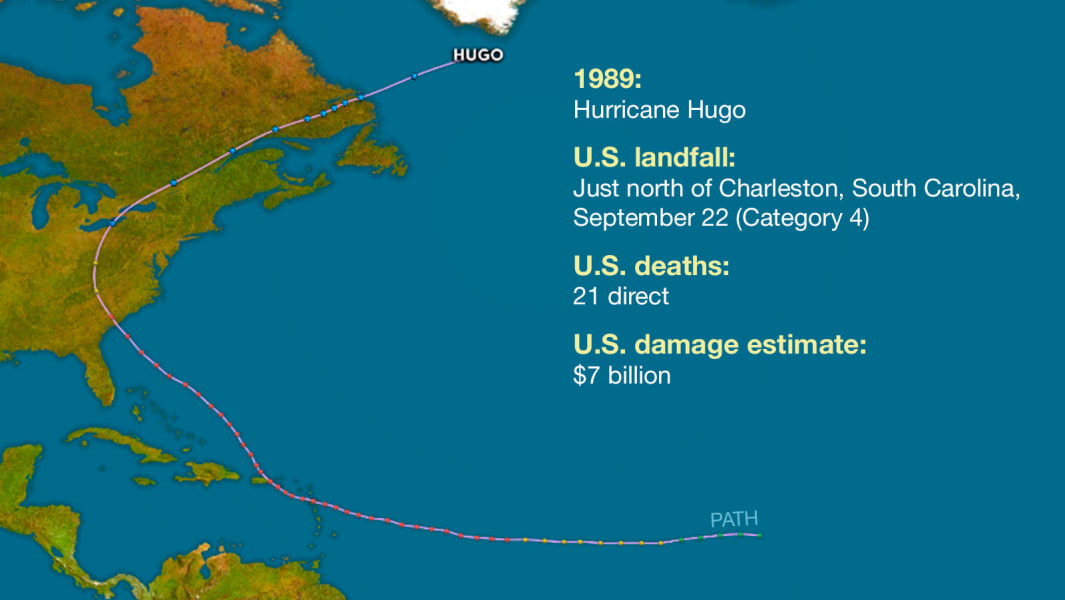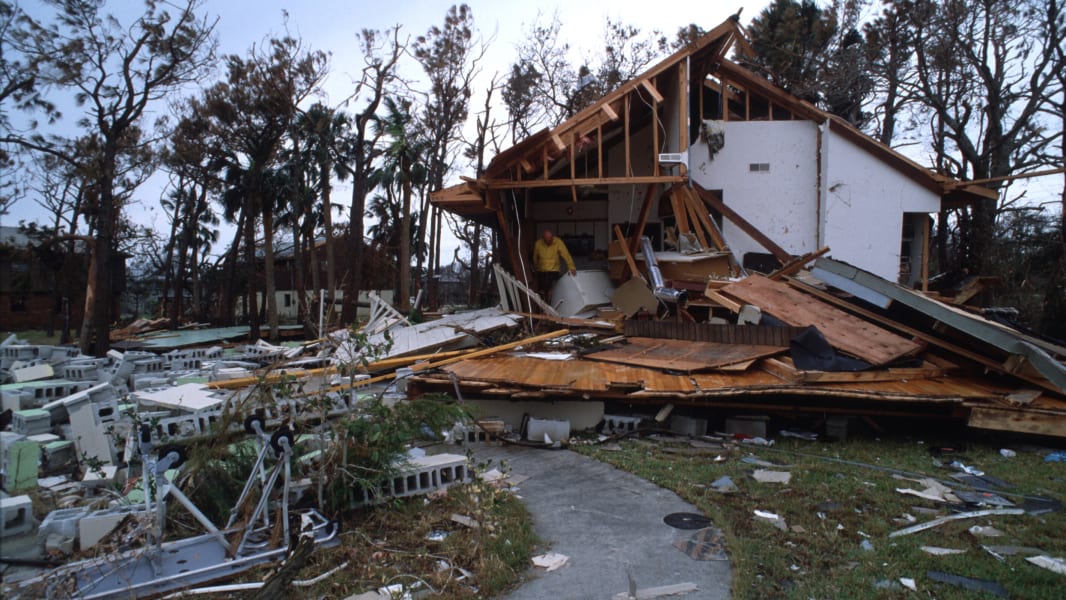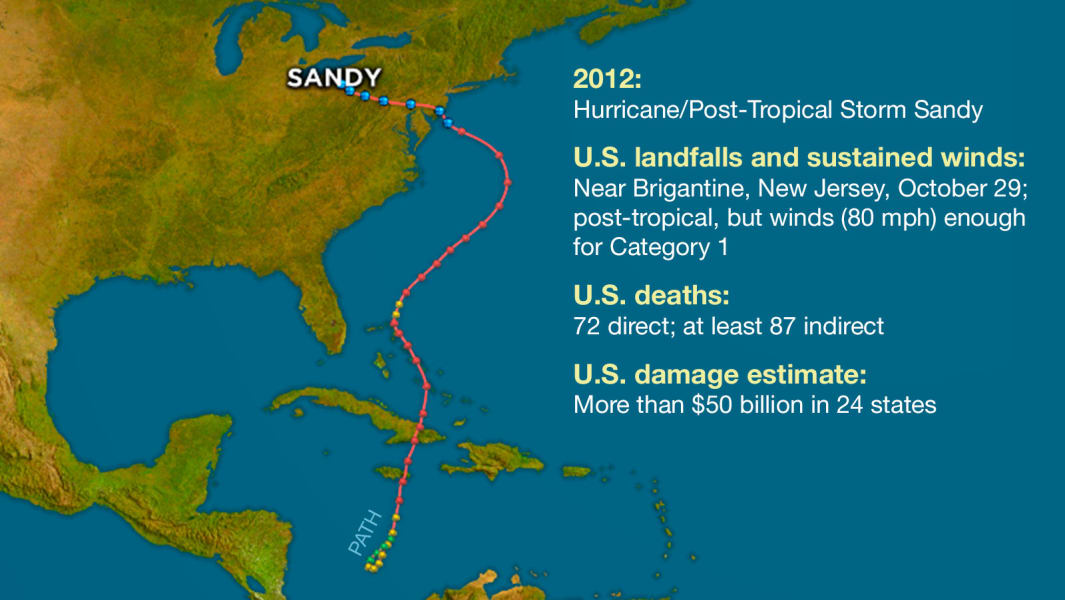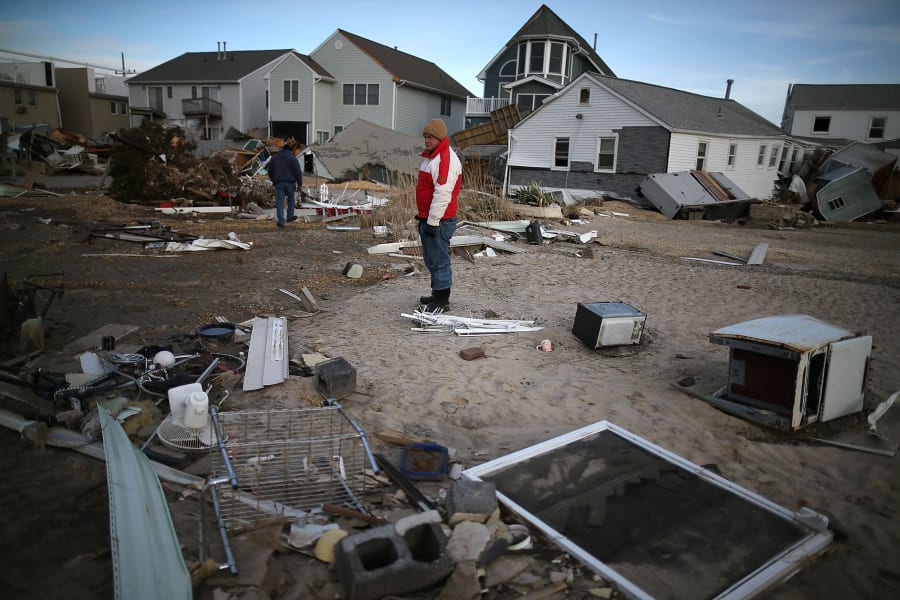Share
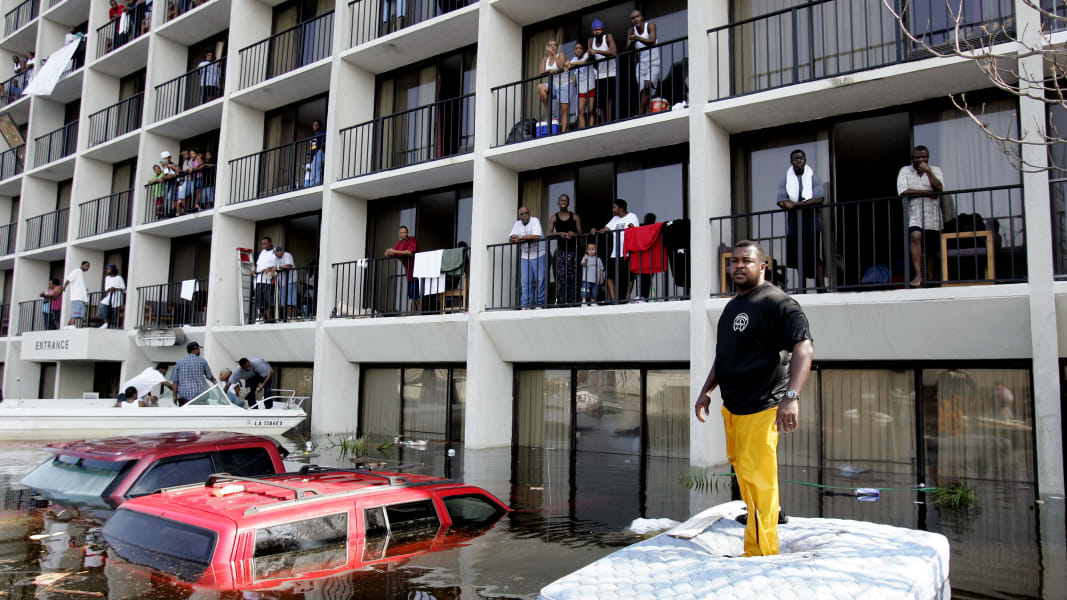

1 of 23
The last 30 years have brought plenty of deadly and destructive storms to the United States, including 2005's Hurricane Katrina (here, police and others use boats to rescue people in a flooded New Orleans neighborhood). Click through the gallery to see more photos of disastrous hurricanes over the last three decades, and check out this video to find out which states have been hit the most often. Eric Gay/AP
CNN
Sandy, 2012: It technically lost its hurricane status shortly before striking New Jersey, but its gigantic size -- it covered 1.8 million square miles at landfall -- sent devastating storm surges to the coast. Here, a man looks for pieces of his beach house after Sandy demolished it in Seaside Heights, New Jersey. With 72 directly killed in eight states, this was the most deadly tropical cyclone outside the South since 1972's Hurricane Agnes. At least 650,000 U.S. homes were damaged or destroyed in the U.S. Mark Wilson/Getty Images
CNN
Irene, 2011: After hitting North Carolina, Irene did most of its damage in the way of heavy rain and flooding in New York and New England. In southern Vermont alone, nearly 2,400 roads were damaged or destroyed, NOAA says. Here, Tony Carr carries a TV set September 1 from his home, which was destroyed by Irene-related floods in Prattsville, New York. Monika Graff/Getty Images
CNN
Ike, 2008: After killing scores in the Caribbean, Ike turned to Texas, sending storm surges that leveled homes on Galveston Island. It's remnants did extensive damage as far north as Ohio, where 2.6 million people lost power. Here, an Air Force Reserve pararescueman scans the ravaged Texas landscape shortly after Ike. Tech. Sgt. Paul Flipse/U.S. Air Force/Getty Images
CNN
Katrina, 2005: Unforgettable Katrina -- the costliest hurricane and one of the five deadliest to hit the United States, according to NOAA -- devastated the Gulf Coast days after crossing Florida. Flooding destroyed thousands of homes in the New Orleans area alone; storm surges wiped out coastal towns in Mississippi. Here, people stand stranded on a roof in New Orleans. Vincent Laforet/POOL/AFP/Getty Images
CNN
Rita, 2005: Just a month after Katrina, Hurricane Rita piled on, slamming into the Louisiana coast. Wind, rain and tornadoes left billions in damages from eastern Texas to Alabama. Here, surging water from Rita reach the streets of New Orleans' Ninth Ward, topping a levee that had just been patched after Katrina damaged it. Robyn Beck/AFP/Getty Images
CNN
Wilma, 2005: The year might be remembered for the one-two punch of Katrina and Rita, but Wilma, which hit Florida after devastating Mexico's Yucatan Peninsula, would become (as of May 2015) the U.S.'s fifth most costly cyclone. Here, workers remove debris from a Miami flower and plant shop on October 28. Millions were without power in the state. Carlo Allegri/Getty Images
CNN
Beta, 2005: Beta wasn't one of the most devastating cyclones, but we include it here to make a point: There were so many named storms in the Atlantic in 2005 that forecasters' pre-approved 21-name list for the year was exhausted. So they went to the Greek alphabet six times, including for Hurricane Beta, which directly hit part of Nicaragua. Here, people wade through a street flooded by Beta in Honduras on October 30. Omar Galindo/La Prensa/AP
CNN
Ivan, 2004: This year also was hurricane-heavy, punctuated by Ivan, a storm with two lives. First, it killed dozens in the Caribbean and slammed into Alabama. Later, its remnants went back over Florida from the Atlantic and re-formed in the Gulf as a tropical storm, making another landfall in southwestern Louisiana. It spawned more than 100 tornadoes, one of the factors that left considerable damage across the Southeast and some mid-Atlantic states. Here, a woman walks over debris as she visits her home, destroyed by Ivan, in Perdido Key, Florida, on September 20. Eric Gay/AP
CNN
Floyd, 1999: Deadly flooding, especially in North Carolina, was one of Floyd's main legacies. Parts of eastern North Carolina and Virginia received 15 to 20 inches of rain, and flooding led to the razing of thousands of buildings -- most of them homes -- from North Carolina to New Jersey. At the time, it was the deadliest U.S. hurricane since 1972. Here,a beach house, severely damaged by Floyd, sits crumbled sits in the sand on the Oak Island town of Long Beach, North Carolina, on November 10. Robert Miller/The News & Observer/AP
CNN
Andrew, 1992: Andrew blasted its way across south Florida on August 24 as a Category 4 with peak gusts measured at 164 mph. After raking entire neighborhoods in an around Homestead, it moved across the Gulf to hit Louisiana as a Category 3. It was responsible for 23 U.S. deaths and three in the Bahamas. Here, a sailboat sits on a sidewalk at Dinner Key in Miami after Andrew washed it ashore. Terry Renna/AP
CNN
Hugo, 1989: Hugo ripped through the Carolinas, starting with Charleston, South Carolina, on September 22 as a Category 4 after raking the U.S. Virgin Islands and Puerto Rico. Here, a man stands in a destroyed house on September 27 in South Carolina. Alan Weiner/Liaison
